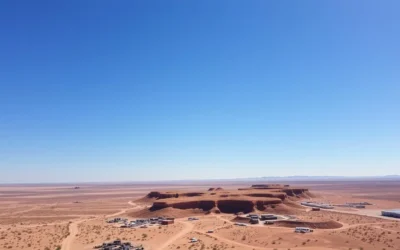Did you know that Australia is the only continent where you can experience tropical monsoons in the north while southern regions enjoy a Mediterranean climate? With a landmass spanning 7.7 million square kilometers (3 million square miles), Australia’s weather varies dramatically across its six climate zones, making timing your visit crucial for the perfect experience.
Getting There & Planning Your Journey
Australia’s major international gateways include Sydney (SYD), Melbourne (MEL), Brisbane (BNE), and Perth (PER), with direct flights available from major cities across Asia, North America, and Europe. Flight times range from 8 hours from Southeast Asia to over 20 hours from Europe and North America.
Planning ahead is essential, particularly for peak seasons when accommodations in popular destinations can book out months in advance. Australia requires all visitors (except New Zealand citizens) to obtain a visa before arrival.
Ready to explore the Land Down Under?
Start by checking flight options to match your ideal weather window.
Best Time to Visit & Weather Tips
Australia’s seasons are opposite to those in the Northern Hemisphere. December-February is summer, March-May is autumn, June-August is winter, and September-November is spring. However, these traditional seasons don’t apply uniformly across the continent.
The northern regions (including Darwin, Cairns, and the Great Barrier Reef) experience just two distinct seasons: a wet season (November-April) and a dry season (May-October). Meanwhile, the southern regions (including Sydney, Melbourne, and Perth) experience four traditional seasons.
Northern Australia
Wet Season (Nov-Apr): Hot and humid with heavy rainfall, temperatures 24-35°C (75-95°F)
Dry Season (May-Oct): Warm days and cool nights, temperatures 15-32°C (59-90°F)
Central Australia
Summer (Dec-Feb): Very hot and dry, temperatures 20-40°C (68-104°F)
Winter (Jun-Aug): Warm days and cold nights, temperatures 0-25°C (32-77°F)
Southern Australia
Summer (Dec-Feb): Warm to hot, temperatures 15-35°C (59-95°F)
Winter (Jun-Aug): Cool to cold, temperatures 5-18°C (41-64°F)
Season-by-Season Guide to Australia
Summer (December-February)
Weather Overview: Hot and sunny across most of the country. Northern regions experience wet season with tropical storms and high humidity. Southern coastal areas enjoy warm, dry conditions. Average temperatures range from 25-35°C (77-95°F).
What to Wear: Light, breathable clothing, sun hat, sunglasses, swimwear, and high-SPF sunscreen. Pack a light rain jacket if visiting northern regions.
Things to Do:
- Beach holidays in Sydney, Melbourne, and Gold Coast
- New Year’s Eve celebrations and summer festivals
- Tasmania exploration (pleasant 20-25°C/68-77°F)
- Wine tasting in cooler southern regions
Pros
- Perfect beach weather in southern states
- Vibrant festival season
- Long daylight hours
- Ideal for Tasmania and southern coast
Cons
- Peak tourist season with higher prices
- Too hot for comfortable Outback exploration
- Wet season limits northern activities
- Risk of cyclones in tropical north

Autumn (March-May)
Weather Overview: Mild and pleasant across most of the country. Northern regions transition from wet to dry season. Southern areas experience cooling temperatures with colorful foliage. Average temperatures range from 15-25°C (59-77°F).
What to Wear: Light layers, long-sleeved shirts, light jacket for evenings, comfortable walking shoes. Still need sun protection.
Things to Do:
- Great Barrier Reef diving (fewer jellyfish)
- Wine harvests in South Australia
- Hiking in national parks
- Melbourne cultural events
Pros
- Comfortable temperatures for outdoor activities
- Fewer tourists and lower prices
- Beautiful autumn colors in southern regions
- End of wet season in the north
Cons
- Variable weather patterns
- Some tropical areas still wet in March
- Cooler ocean temperatures for swimming
- Shorter daylight hours

Winter (June-August)
Weather Overview: Mild in northern regions, cold in southern areas. Perfect dry season in tropical north. Snow in alpine regions of NSW, Victoria, and Tasmania. Average temperatures range from 5-20°C (41-68°F) in the south and 15-30°C (59-86°F) in the north.
What to Wear: Warm layers, jacket, scarf, and hat for southern regions. Light clothing with a jacket for evenings in northern areas. Ski gear if visiting alpine regions.
Things to Do:
- Explore the Outback and Red Centre
- Ski in the Snowy Mountains or Victorian Alps
- Whale watching along the east coast
- Great Barrier Reef without stingers
Pros
- Perfect weather for northern exploration
- Ideal for Outback and Uluru visits
- Whale migration season
- Snow sports in alpine regions
Cons
- Cold and rainy in southern cities
- Some attractions closed in southern regions
- Peak season for northern destinations
- Limited beach activities in the south

Spring (September-November)
Weather Overview: Warming temperatures across the country. Southern regions bloom with wildflowers. Northern areas begin to heat up before wet season. Average temperatures range from 15-25°C (59-77°F) in the south and 20-35°C (68-95°F) in the north.
What to Wear: Light to medium layers, t-shirts with light jacket for evenings, comfortable walking shoes, and sun protection.
Things to Do:
- Wildflower viewing in Western Australia
- Outdoor festivals and events
- Great Barrier Reef before stinger season
- Wildlife watching (baby koalas and kangaroos)
Pros
- Pleasant temperatures nationwide
- Spectacular wildflower displays
- Fewer tourists than summer
- Baby wildlife sightings
Cons
- Increasing humidity in the north
- Variable weather patterns
- School holiday periods increase crowds
- Stinger season begins in November

Best Time to Visit Australia
Overall Best Months: April-May and September-October offer the most pleasant weather nationwide with fewer crowds and lower prices.
| Destination | Best Time to Visit | Weather Conditions | Avoid |
| Sydney & Melbourne | October-April | Warm, 18-26°C (64-79°F) | June-August (cold, rainy) |
| Great Barrier Reef | May-October | Dry, 17-26°C (63-79°F) | November-April (stingers, rain) |
| Uluru & Red Centre | April-October | Mild days, 20-30°C (68-86°F) | December-February (extreme heat) |
| Tasmania | December-March | Mild, 15-23°C (59-73°F) | June-August (cold, wet) |
| Perth & WA | September-November | Mild, 15-25°C (59-77°F) | December-February (very hot) |
| Darwin & Top End | May-October | Dry, 21-32°C (70-90°F) | November-April (wet, humid) |
Getting Around Locally

Australia’s vast size means that domestic flights are often the most practical way to travel between major cities. Qantas, Virgin Australia, and Jetstar offer extensive domestic networks. For exploring regions, renting a car provides the most flexibility, especially for coastal drives like the Great Ocean Road or visiting national parks.
Domestic Flights
Quick connections between major cities. Sydney to Melbourne is just 1.5 hours, while Sydney to Perth takes about 5 hours.
Rental Cars
Essential for regional exploration. Drive on the left side of the road. 4WD vehicles recommended for Outback adventures.
Public Transport
Excellent in major cities. Consider the Opal card in Sydney or myki in Melbourne for convenient travel.
For long-distance travel, consider iconic train journeys like The Ghan (Adelaide to Darwin) or the Indian Pacific (Sydney to Perth), which offer spectacular views of the changing landscapes. In cities, public transport is well-developed, with extensive bus, train, and tram networks.
Where to Stay

Australia offers accommodations for every budget and preference, from backpacker hostels to luxury resorts. Weather considerations should influence your choice of lodging, particularly in tropical regions where air conditioning is essential during summer months.
City Hotels
Major cities offer international chains and boutique hotels. Sydney and Melbourne prices peak during summer and special events. Book early for December-January stays.
Coastal Resorts
Popular in Queensland and Western Australia. Consider shoulder seasons (April-May or September-October) for better rates and pleasant weather.
Outback Lodges
Unique experiences in remote locations. Book winter months (June-August) for comfortable temperatures and clear skies.
Find Your Perfect Australian Stay
From beachfront apartments to Outback glamping, book accommodations that match your weather preferences.
Dining & Local Cuisine

Australia’s culinary scene reflects its multicultural population and abundant local produce. Seasonal variations affect menu offerings, with summer bringing an abundance of tropical fruits and seafood, while winter features heartier fare.
Seasonal Food Highlights
Summer (Dec-Feb)
- Fresh seafood including prawns, oysters, and barramundi
- Tropical fruits like mangoes, lychees, and passionfruit
- Outdoor dining and beachside barbecues
Winter (Jun-Aug)
- Truffle season in Western Australia and Tasmania
- Hearty meat dishes including kangaroo and lamb
- Warming shiraz wines from South Australia
Australia’s wine regions are worth visiting year-round, though harvest season (February-April) offers special insight into the winemaking process. The Barossa Valley, Margaret River, and Yarra Valley are particularly beautiful in autumn when the vines display colorful foliage.
Attractions, Sightseeing & Activities

Australia’s attractions are best enjoyed when weather conditions are optimal. Here’s a guide to when you should visit the country’s most iconic sights:
Great Barrier Reef
Best Time: May-October
Visit during the dry season for excellent visibility and no stinger jellyfish. Water temperatures range from 22-25°C (72-77°F), perfect for snorkeling and diving.
Uluru & Red Centre
Best Time: April-October
The cooler months offer comfortable daytime temperatures of 20-30°C (68-86°F), making it ideal for walks around the base of Uluru and exploring Kata Tjuta.
Sydney Harbour
Best Time: October-April
Enjoy the iconic Opera House and Harbour Bridge during summer and shoulder seasons when days are long and temperatures average 20-26°C (68-79°F).

Great Ocean Road
Best Time: November-May
The warmer months offer pleasant driving conditions and longer daylight hours to enjoy the Twelve Apostles and coastal scenery.
Daintree Rainforest
Best Time: May-September
Visit during the dry season when trails are accessible and wildlife is more active. Temperatures average 17-26°C (63-79°F).
Kangaroo Island
Best Time: September-May
Spring through autumn offers the best wildlife viewing opportunities and comfortable temperatures for exploring beaches and national parks.
Experience Australia’s Natural Wonders
Book guided tours to make the most of your weather-perfect visit.
Museums, Cultural Spots & Festivals

Australia’s cultural calendar is packed with events throughout the year, many timed to coincide with optimal weather conditions. Indoor museums and galleries offer excellent refuge during extreme weather, whether escaping summer heat or winter rain.
Weather-Savvy Festival Planning
| Festival | Location | Month | Weather Conditions |
| Sydney Festival | Sydney | January | Hot summer, 19-26°C (66-79°F) |
| Adelaide Fringe | Adelaide | February-March | Warm, dry, 16-29°C (61-84°F) |
| Vivid Sydney | Sydney | May-June | Mild autumn, 10-19°C (50-66°F) |
| Darwin Festival | Darwin | August | Dry season, 21-32°C (70-90°F) |
| Melbourne Cup | Melbourne | November | Spring, 12-22°C (54-72°F) |
| Woodford Folk Festival | Queensland | December | Hot, possible storms, 17-29°C (63-84°F) |
Major cultural institutions like the National Gallery of Australia in Canberra, the Art Gallery of New South Wales in Sydney, and the National Gallery of Victoria in Melbourne offer world-class exhibitions year-round in climate-controlled comfort.
Sports, Nature & Outdoor Experiences

Australia’s diverse landscapes offer outdoor adventures year-round, but timing is crucial for the best experience. Wildlife viewing, hiking, and water sports are all weather-dependent activities.
Seasonal Outdoor Activities
Whale Watching
Best Time: May-November
Humpback and southern right whales migrate along Australia’s coastlines during these months. Prime viewing locations include Hervey Bay (QLD), Eden (NSW), and Albany (WA).
Hiking & Bushwalking
Best Time: April-October (north), September-May (south)
Avoid summer heat for serious hikes, especially in inland areas. The Larapinta Trail (NT) is best in winter, while Tasmania’s Overland Track is ideal in summer.
Wildlife Viewing
Best Time: September-November
Spring offers excellent wildlife viewing as baby animals emerge and species become more active. Kangaroo Island and Tasmania are particularly rewarding during this period.
Surfing
Best Time: Year-round (varies by location)
The Gold Coast and Sydney offer good conditions year-round. Southern locations like Bells Beach (VIC) and Margaret River (WA) have bigger swells in winter.

Safety, Etiquette & Local Customs
Sun Safety: Australia has one of the highest UV indexes in the world. Even on cloudy days, wear SPF 50+ sunscreen, a hat, sunglasses, and protective clothing. The Australian sun can cause severe burns in as little as 15 minutes.
Weather-related safety concerns vary by season and region. During summer, be aware of bushfire risks in rural areas and heatwaves in cities. The northern wet season brings flooding risks and cyclone threats. Always check weather forecasts before outdoor activities.
Beach Safety
- Swim between the red and yellow flags at patrolled beaches
- Be aware of rip currents and marine stingers
- Check for beach closures during stinger season (November-May) in northern Queensland
Outback Safety
- Carry plenty of water (at least 4-5 liters per person per day)
- Inform someone of your travel plans
- Avoid hiking during the heat of the day in summer
Respect for Indigenous culture is important when visiting sacred sites like Uluru. Follow guidelines about photography and restricted areas. Australia’s relaxed culture extends to dress codes, though smart casual attire is expected at upscale restaurants and events.
Practical Travel Tips

Weather-Based Packing Tips
Summer Essentials
- High SPF sunscreen (50+)
- Wide-brimmed hat and sunglasses
- Light, breathable clothing
- Insect repellent
- Reusable water bottle
Winter Necessities
- Layers for variable temperatures
- Waterproof jacket (southern regions)
- Warm hat and gloves (for alpine areas)
- Sunscreen (still needed in winter)
- Sturdy walking shoes
Year-Round Items
- Adapter plugs (Type I)
- Camera for wildlife and landscapes
- Comfortable walking shoes
- Swimwear (useful year-round)
- Reef-safe sunscreen for marine areas
Time Zone Tip: Australia spans three time zones, and some states observe daylight saving time while others don’t. The east coast (Sydney, Melbourne) is typically 10 hours ahead of GMT, central Australia is 9.5 hours ahead, and Western Australia is 8 hours ahead.
Australia’s peak tourist seasons coincide with school holidays, particularly December-January (summer) and June-July (winter). Book accommodations well in advance for these periods, especially in popular coastal areas during summer and ski resorts in winter.
Ready for Your Australian Adventure?
From the tropical rainforests of Queensland to the red deserts of the Outback and the pristine beaches of the coast, Australia offers incredible experiences in every season. By timing your visit to match your preferred activities and destinations, you’ll enjoy the best that this diverse continent has to offer.
Start Planning Your Weather-Perfect Australian Journey
With 10,685 beaches, 500+ national parks, and six distinct climate zones, your ideal Australian adventure awaits.
The above is subject to change.
Check back often to TRAVEL.COM for the latest travel tips and deals.






